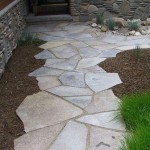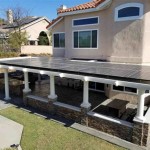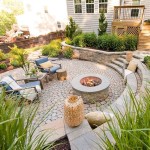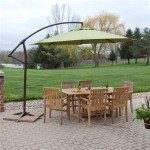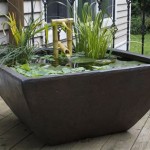How To Build A Gazebo On A Concrete Patio In A Japanese Style Garden
Integrating a gazebo into a Japanese-style garden built upon a concrete patio requires careful planning and execution to maintain the aesthetic principles of the garden while accommodating the existing structure. This article details the process of constructing a gazebo suitable for a Japanese garden setting directly onto a concrete patio, emphasizing design considerations, material selection, and construction techniques.
The project begins with a thorough assessment of the concrete patio's condition and suitability. The existing concrete must be level, structurally sound, and capable of supporting the weight of the gazebo. Any cracks, uneven surfaces, or signs of deterioration need to be addressed before proceeding. This might involve patching minor cracks with concrete repair mortar, leveling uneven areas with self-leveling compound, or, in severe cases, resurfacing the entire patio. A stable and even base is crucial for the gazebo's structural integrity and longevity.
Furthermore, the size and shape of the concrete patio will dictate the dimensions and design of the gazebo. It's important to ensure that the gazebo fits harmoniously within the space and complements the overall layout of the Japanese garden. Consider the surrounding elements such as existing plants, water features, and pathways when determining the gazebo's placement and orientation.
Designing the Gazebo for a Japanese Garden
The design of the gazebo is paramount in achieving a Japanese garden aesthetic. Traditional Japanese structures emphasize simplicity, natural materials, and a deep connection with the surrounding environment. Therefore, the gazebo should avoid elaborate ornamentation and focus on clean lines and understated elegance.
Typical design elements include:
- Roofing: A hipped or gabled roof with a gentle slope is characteristic of Japanese architecture. Consider using cedar shingles, bamboo tiles, or clay tiles for a traditional look. The roof overhang should be sufficient to provide shade and protection from the elements.
- Framing: Use natural wood, such as cedar, redwood, or cypress, for the gazebo's frame. These woods are naturally resistant to decay and insects, ensuring the gazebo's durability. The framing should be exposed to showcase the beauty of the wood grain.
- Posts: The posts supporting the roof should be substantial and well-proportioned. Consider using round or square posts, depending on the overall design. The posts can be anchored directly to the concrete patio using appropriate hardware.
- Open Sides: Japanese gazebos typically feature open sides to allow for unobstructed views of the garden. However, consider adding shoji screens or bamboo blinds for privacy and to filter sunlight.
- Platform: Instead of sitting directly on the concrete, consider building a raised wooden platform inside the gazebo. This provides a more comfortable and aesthetically pleasing surface.
Integrating Japanese design principles such as asymmetry, balance, and simplicity will ensure that the gazebo seamlessly blends into the garden. Avoid overly bright colors and opt for natural tones that complement the surrounding greenery.
Material Selection and Preparation
Choosing the right materials is crucial for the gazebo's appearance and longevity. As mentioned previously, natural wood such as cedar, redwood, and cypress are excellent choices for the frame. These woods offer natural resistance to rot and insects, making them suitable for outdoor use.
Before starting construction, the wood should be properly seasoned and treated with a wood preservative to further enhance its durability. This will help protect the wood from moisture damage and insect infestation. The type of stain or sealant applied will affect how long the wood lasts. Consider a penetrating oil based stain.
Hardware should be selected with both functionality and aesthetics in mind. Use stainless steel or bronze fasteners to prevent rust and corrosion. Conceal fasteners whenever possible to maintain a clean and uncluttered appearance.
For the roofing, consider traditional Japanese materials such as cedar shingles, bamboo tiles, or clay tiles. These materials will add an authentic touch to the gazebo and complement the overall Japanese garden design. Ensure that the roofing material is properly installed to prevent leaks and water damage.
If incorporating shoji screens or bamboo blinds, select high-quality materials that are resistant to fading and weathering. These elements should be carefully installed to ensure smooth operation and a clean appearance.
Construction Techniques and Anchoring
Building a gazebo on a concrete patio requires specific construction techniques to ensure structural stability and proper anchoring. The first step is to lay out the gazebo's footprint on the concrete patio and mark the locations of the posts.
Anchoring the Posts: Since the gazebo will be built on concrete, the posts need to be securely anchored to the patio. Several methods can be used, including:
- Surface Mounting: This involves using metal post bases that are bolted directly to the concrete. The post bases should be specifically designed for surface mounting and rated for the gazebo's size and weight. Use concrete anchors or expansion bolts to secure the post bases to the concrete.
- Core Drilling: This involves drilling holes into the concrete and inserting steel rods that are then grouted in place. The posts are then attached to the steel rods using bolts or welds. This method provides a very strong and secure connection but requires specialized equipment.
- Using Concrete Footings: If the concrete patio is not thick enough to provide adequate support, consider cutting away sections of the concrete and pouring small concrete footings below the patio surface. The posts can then be anchored to these footings using embedded hardware.
Regardless of the anchoring method used, it's crucial to ensure that the posts are plumb and level. Use shims to adjust the post positions as needed. Once the posts are securely anchored, the rest of the gazebo frame can be constructed.
Framing the Gazebo: The gazebo's frame should be constructed using traditional woodworking techniques, such as mortise and tenon joints or lap joints. These joints provide a strong and durable connection. Use galvanized nails or screws to fasten the frame members together.
Installing the Roof: The roof frame should be carefully constructed and securely attached to the gazebo's frame. Follow the manufacturer's instructions for installing the roofing material. Ensure that the roof is properly sealed to prevent leaks.
Adding Finishing Touches: Once the gazebo is structurally complete, add the finishing touches, such as shoji screens, bamboo blinds, or a raised wooden platform. These elements will enhance the gazebo's aesthetic appeal and create a more comfortable space.
Throughout the construction process, pay close attention to detail and ensure that all components are properly aligned and securely fastened. Regular inspections will help identify and correct any potential problems before they become major issues.
Integrating additional Japanese garden elements around the gazebo will further enhance its connection to the surrounding landscape. Consider adding a gravel pathway leading to the gazebo, planting Japanese maples and other traditional plants nearby, or incorporating a small stone lantern to create a focal point.
Regular maintenance is essential to preserving the gazebo's beauty and structural integrity. This includes cleaning the wood surfaces, inspecting the roof for leaks, and applying wood preservative as needed. By following these guidelines, a gazebo on a concrete patio can become a serene and harmonious addition to any Japanese-style garden.

Our 6 X Straight Roof Azumaya Or Japanese Asian Gazebo Pavilion In A Japan Pool San Diego By Wood S Houzz

Japanese Garden Koshikake Custom Made Woodwork Architecture

10 Essential Elements For Creating A Japanese Garden Design Advanced Pavers Landscape

Arbor In The Japanese Style 40 Photos Options For Design Lighting Building

Bali Tea House Japanese Style Gazebo Summerwood S

How To Zen Your Backyard

Azumaya Or Japanese Gazebo Designs Asian Patio San Diego By Wood S Houzz Au

How Much Does It Cost To Build A Gazebo Guide

Japanese Garden Koshikake Custom Made Woodwork Architecture

33 Japanese Garden Landscaping Ideas Ways To A Perfect Balance
Related Posts


